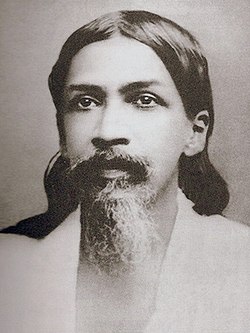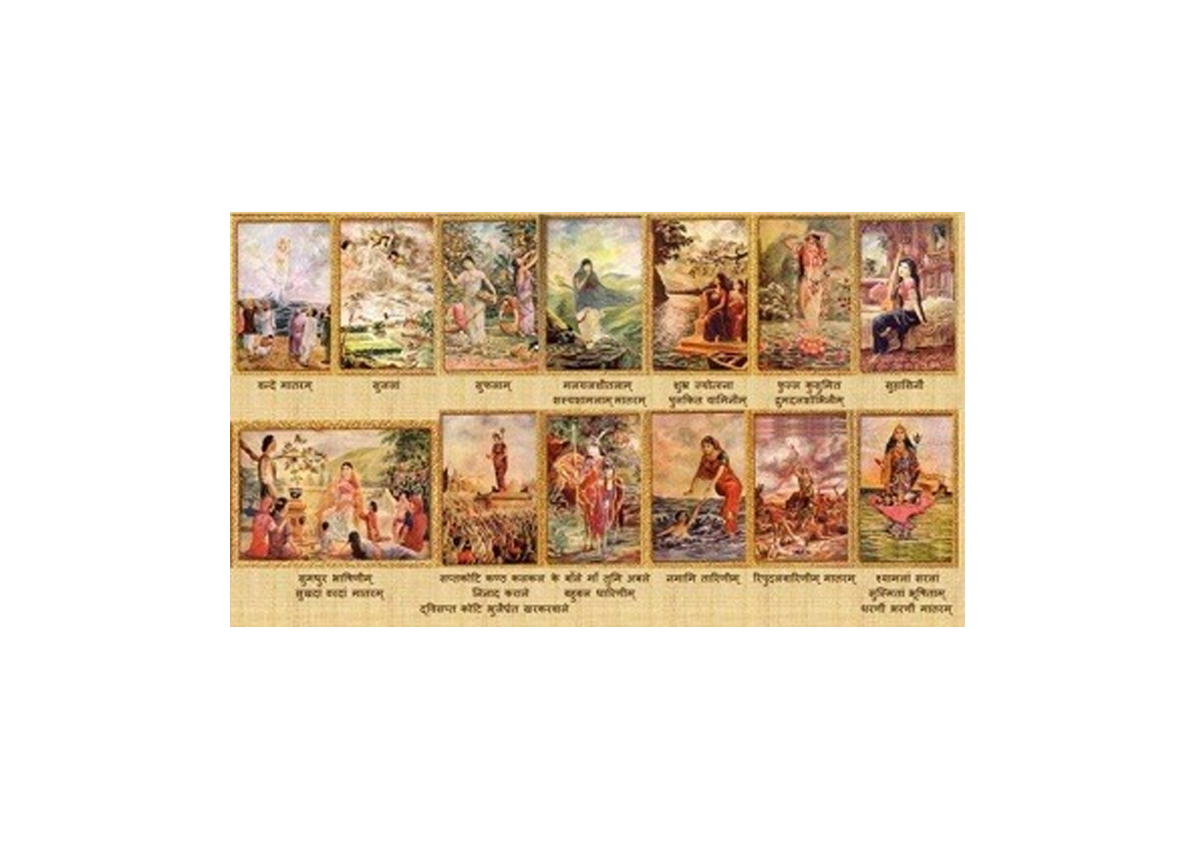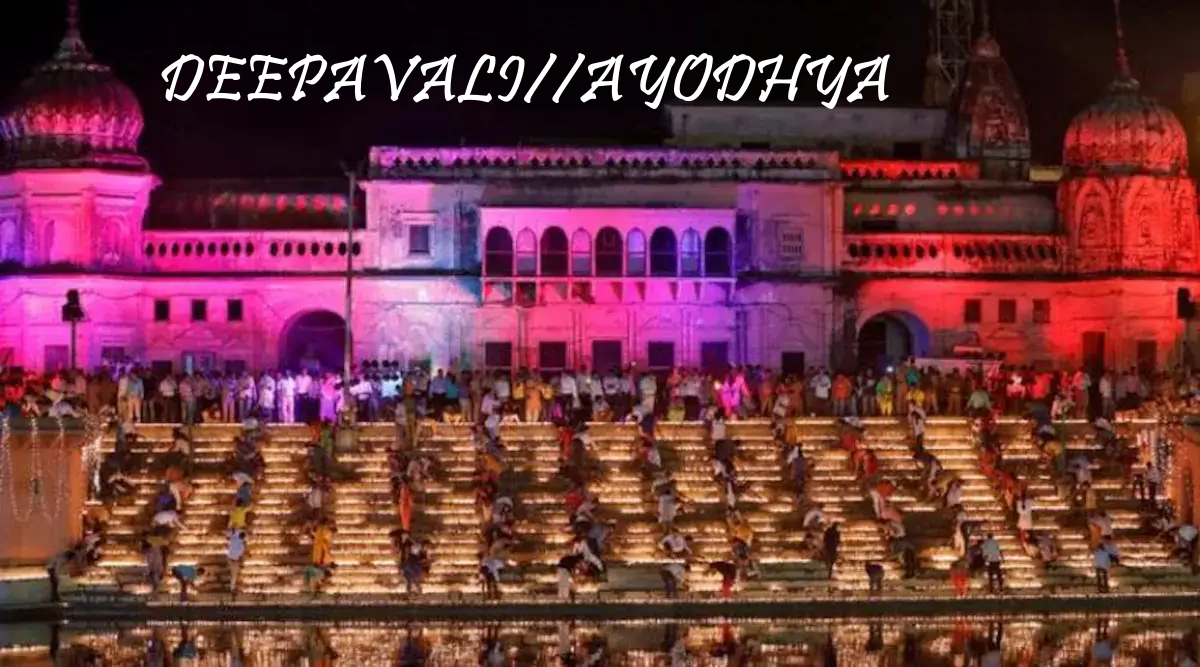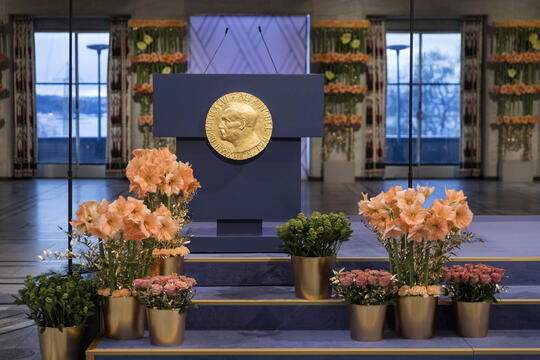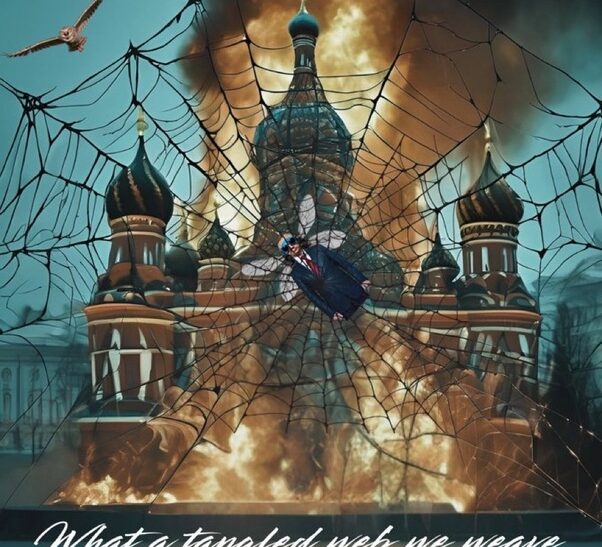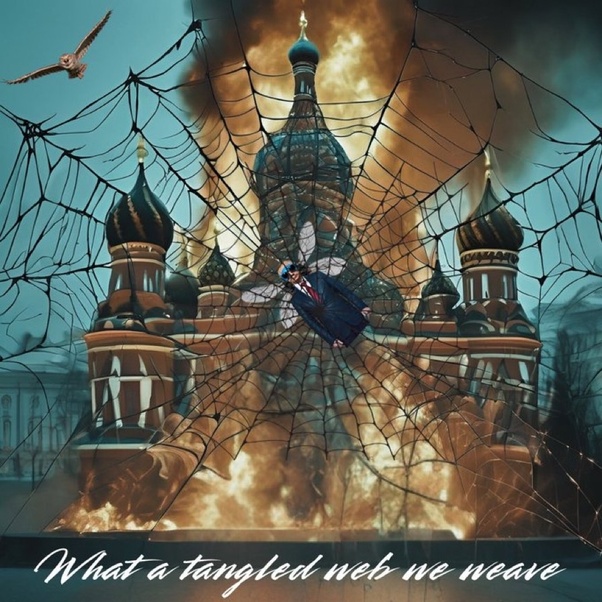RISHI AUROBINDO
SARASIJ MAJUMDER
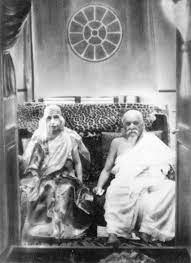
On 15th August 2022, India mildly remembered 150 years of Birth Anniversary of “RISHI AUROBINDO”. However, this event, didn’t aroused Bengali sentiment much—as was observed by me. Chennai had some responses.
Prime Minister then set up a committee to mark the 150th birth anniversary of spiritual leader Sri Aurobindo on 15th August 2022.
As it being the independence day—his birthday was not much prioritized.
After more than 150 years, today, the person is just a dot in the book of ‘Who’s Who’ of Bengal—nay, of India. A very brilliant mind, a political revolutionary, and a spiritual Giant never got his dues in independent West Bengal, and India. He is mostly ignored in school curriculum also!
But he was A Scholar, A Revolutionary, Yogi, Seer, Philosopher, Poet, and an Indian Nationalist who Propounded A Philosophy Of Divine Life On Earth Through Spiritual Evolution.
He died on 5th December 1950 at Pondicherry.
His whole life, can be divided into several distinct phases:
EDUCATION:
Sri Aurobindo’s early education took place at the Loreto Convent School in Darjeeling.
Later, he was sent to England for further schooling, where he attended St. Paul’s School in London and King’s College, Cambridge.
Sri Aurobindo obtained a B.A. degree in Classics (Greek and Latin) from Cambridge University. He passed the First Part of the Classical Tripos examination in the first class during his second year at Cambridge, which is the usual requirement for a B.A. degree, but he did not formally graduate until his third year.
Sri Aurobindo Ghosh (later known as Sri Aurobindo) passed the Indian Civil Service (ICS) examination but chose not to join the service. He passed the written examination with a very high rank but refused to participate in the horse-riding test, effectively disqualifying himself intentionally, because he didn’t want to work for, and under the British Raj.
Instead, he returned India. Motherland beckoned.
SERVICE:
He chose to work in Baroda, joining the Baroda State Service, in 1892, where he spent 13 years in various administrative and academic positions. During this stage, many times he came to Calcutta, and met many leaders and Pioneers of Bengal’s revolutionaries — got influenced, and joined the group.
He published an English Newspaper, weekly, called Bande Mataram in 1905.
In 1906, Aurobindo was appointed the first principal of the National College in Calcutta and started to impart national education to Indian youth. He resigned from this position in August 1907, due to his increased involvement with political activities. The National College continues to be the present day Jadavpur University, Kolkata.
He was simultaneously associated with Congress, as well as keeping secret alliance with Bengal Revolutionaries.
He also began the study of Yoga and ancient Indian scriptures, in Sanskrit, during this time.
POLITICAL ASSOCIATION, REVOLUTIONARY: –
Aurobindo attended the 1906 Congress meeting headed by Dadabhai Naoroji and participated as a councillor in forming the fourfold objectives of “Swaraj, Swadesh, Boycott, and National Education”. In 1907, at the Surat session of Congress, where moderates and extremists had a major showdown, he led along with extremists in association of Bal Gangadhar Tilak. The Congress got split after this session. In 1907–1908, Aurobindo travelled extensively to Pune, Bombay, and Baroda to firm up support for the nationalist cause, giving speeches and meeting with various groups. On May 2, 1908, the police raided several locations in Calcutta, arresting 20 suspected revolutionaries, including Sri Aurobindo Ghosh, and some members of the Maniktala Secret Society, later known as ‘Anushilan Samiti’. My family was deeply involved with this organization. It’s living members continued to have get-together as late as 1980. Couple of times I attended the get together with my Grand Uncle, or Father.
Shri Aurobindo was arrested in May 1908 in connection with the Alipore Bomb Case.
Alipore Conspiracy Case (1908), or the “Emperor vs Aurobindo Ghosh and others” also known as the Muraripukur or Maniktala bomb conspiracy was a pivotal legal and political event of the Indian independence movement, that took place from 1908 to 1909. Alipore Conspiracy Case arose in the aftermath of an assassination attempt on British Magistrate Douglas Kingsford by young Bengali revolutionary nationalists Khudiram Bose and Prafulla Chaki.
Alipore Conspiracy Case highlighted the conflict between Imperial rulers and Nationalistic aspirations of India. This legal fight also influenced the future of the Indian Independence struggle.
Alipore Conspiracy Case dubbed “the first state trial of large magnitude in India”, had several significant impacts including intensified nationalist fervour, and demonstrated the repressive tactics of the British, inspired future revolutionaries, and marked Aurobindo Ghosh’s shift from a Revolutionary, and Freedom fighter to a spiritual Monk.
He was imprisoned in a solitary confinement inside Alipore Jail. The trial of the Alipore Bomb Case lasted for a year, but ultimately, he was acquitted on 6 May 1909. The eventual elimination of Naren Goswami, who earlier turned witness for the Britishers, diluted his case in absence of ‘WITNESS’. His Défense counsel was none other than Desh Bandhu Chittaranjan Das.
Defending Aurobindo, Barrister Das argued, “Me Lord, if love of my country is a CRIME, then I am a CRIMINAL…”
During his stay in the Jail, his view of life got radically changed due to spiritual experiences and realizations. Consequently, his aim went far beyond the service and liberation of the country.
Aurobindo said he was “visited” by Vivekananda in the Alipore Jail: “It is a fact that I was hearing constantly the voice of Vivekananda speaking to me for a fortnight in the jail in my solitary meditation and felt his presence.”
Swami Vivekananda died on 4th July, 1902—much before he was even arrested!
AFTER ACQUITTAL:
Two years later he left British India and found refuge in the French colony of Pondichéry (Puducherry), reaching via Chandan Nagar, and sailing in a FRENCH SHIP, both were under control of France where he devoted himself for the rest of his life to the development of his “integral” yoga with an aim of a fulfilled and spiritually transformed life on earth.
SPIRITUAL LIFE, 1911–1950:
In Pondichéry he founded a community of spiritual seekers, which took shape as the Sri Aurobindo Ashram in 1926, which later became “AUROVILLE”.
He believed that the basic principles of matter, life, and mind would be succeeded through terrestrial evolution by the principle of super mind as an intermediate power between the two spheres of the infinite and the finite.
Nevertheless, till India was independent—he kept touch will many revolutionaries, and political leaders, including Subhash Chandra Bose, and often condemned British oppression.
MOTHER (MIRRA ALFASSA)
Sri Aurobindo and The Mother (Mirra Alfassa) were deeply connected spiritually and collaboratively worked towards the realization of a higher consciousness on Earth, known as the Supramental. The Mother played a crucial role in establishing and guiding the Sri Aurobindo Ashram and the international township of Auroville, both dedicated to their shared vision.
Both Sri Aurobindo and The Mother aimed to manifest a new mode of consciousness, the Supramental, which they believed would transform humanity and the physical world.
The Mother was recognized by Sri Aurobindo as the embodiment of the Divine Shakti, the creative force of the universe. She played a vital role in guiding the disciples of the Ashram and leading the work of establishing Auroville.
The Ashram, established in Pondicherry (now Puducherry), became a hub for their spiritual practice and experimentation, while Auroville, an international township, was envisioned as a living model of a new way of life based on their vision.
Sri Aurobindo referred to The Mother as the Divine Mother, while The Mother considered him as the Lord, highlighting their interconnectedness and shared purpose.
SUPRAMENTAL, AND ME:
I was first impressed by reading ‘The Life Divine’. And I was intrigued also by ‘SUPRAMENTAL’, when I read this 80 page book: The Supramental Manifestation upon Earth, —and decided to get more familiarised with his teachings. Accordingly, I interacted with the ‘ASHRAM’, and ultimately visited for a week, towards late 1975, and attended lectures with associated INTEGRAL YOUGIC PROCESSES.
WHAT I UNDERSTOOD: SPIRITUALLY, HE WAS TRYING TO COMBINE VEDANTA, AND TANTRA. They are also my two Favorito subjects. I would like to mention here that under an ‘ABADHUT’, I practised ‘TANTRA’ for one year, October 1973 to November1974, covering 2 Kali Pujas while I was working in DSP. After that, when Abadhut left Durgapur, and I couldn’t proceed further.
Now I narrate what I learned, and understood from my stay at AUROVILLE:
Sri Aurobindo was indeed interested, and studied Tantra, and it significantly influenced his Integral Yoga. While he didn’t adopt all Tantric practices, he recognized its significance as another facet of the same Truth as Veda and Vedanta. His understanding of Tantra emphasized the Divine Mother and the need to see her in all beings, including all women.
Tantra’s Influence: Sri Aurobindo’s Integral Yoga, with its emphasis on transformation and the ascent to higher consciousness, draws from Tantric knowledge and practice, particularly the concept of ascending consciousness through the centers and the role of the Mother’s force (SHAKTI).
Aurobindo’s spirituality, shaped by Tantra, emphasizes the Divine Mother and seeing her in all women. He translated a Tantric verse, “O Devi, I worship you. O woman, I worship you as a Devi,” highlighting the importance of recognizing the divine in all.
Sri Aurobindo believed that Veda, Vedanta, and Tantra represent different aspects of the same Truth, and his Integral Yoga aims to synthesize these different approaches. He recognized the importance of Shakti (the Divine Power) as emphasized in Tantra.
The process of Kundalini awakening and purification of the centers, a key Tantric practice, is not explicitly followed in Aurobindo’s yoga, but there’s an ascent of consciousness through different levels, similar to the Tantric practice.
Unlike some forms of Tantra, Sri Aurobindo’s Integral Yoga didn’t reject the world but sought to transform it, aligning with a more holistic and world-affirming approach.
Initially, Sri Aurobindo focused on the Divine Mother through Krishna (VAISHNAV CULTURE), but after his experience in Alipore Jail, he began to see the Divine Mother through the form of Kali (SHAKTA CULTURE) and incorporated her into his teachings.
In his personal note book, recovered after his death, a Tantrik manuscript, 14 pages, incomplete, was found composed.
LITERARY WORKS BY SHRI AUROBINDO:
In 1914, after four years of secluded yoga, he started publishing a monthly philosophical magazine called Arya. This ceased publication in 1921. Later, he revised some of these works before they were published in book form. Some of the book series derived from this publication were:
The Life Divine, The Synthesis of Yoga, Essays on The Gita, The Secret of The Veda, Hymns to the Mystic Fire, The Upanishads, The Renaissance in India, War and Self-determination, The Human Cycle, The Ideal of Human Unity and The Future Poetry.
Another very important composition by him was: Bhagavad Gita and Its Message.
The reader can have the complete list of books written, and published by him if he searches “AUROVILLE” domain.
Other References:
- Britannica, Biography and facts, Auro society .org, Wikipedia.org
- Sri Aurobindo, India, Ideological discourses – Debashish Banerji International Journal of Dharma Studies (Nov 2013) – Springer Publications. Springer Open website.
- ‘Sri Aurobindo as a Spiritual Optimist – The Life Devine and Synthesis of Yoga’ Dr S Jayanti Shanmugam & M. Umai Arsi (K. S. Rangaswamy College of Technology) Asian Journal of Research in Social Sciences and Humanities, Jan. 2016.
- Sri Aurobindo ‘An integral review’ Nipa Sarkar, Dept of Education, Mahadev Ananda Mahavidyalaya, Barrackpore, Indian Journal of Research (ISSN No. 2250-1991), Vol.7, Issue 8 (Aug 2018)
- ‘Educational Philosophy of Sri Aurobindo Ghosh’ – Alka Saini, Journal- Recent Research in Social Sciences & Humanities (Issue 2, Year 4, Jul-Aug – Sep (2017), pages 70-75, (ISSN 2348-3318)
6.0 His compositions listed above.
7.0 Image: — GOOGLE/ Ownership acknowledged.
DISCLAIMER: — This is a non-commercial BLOG. Copyright of the text is protected.

